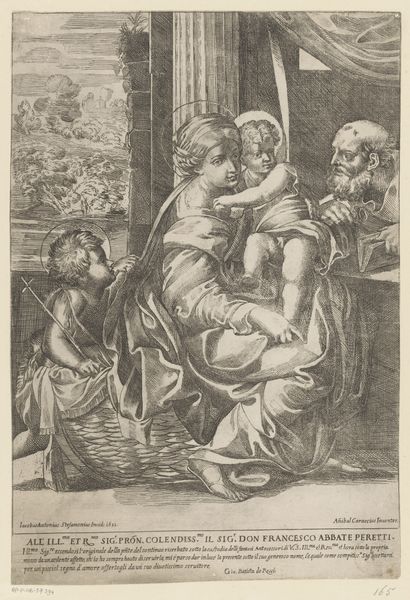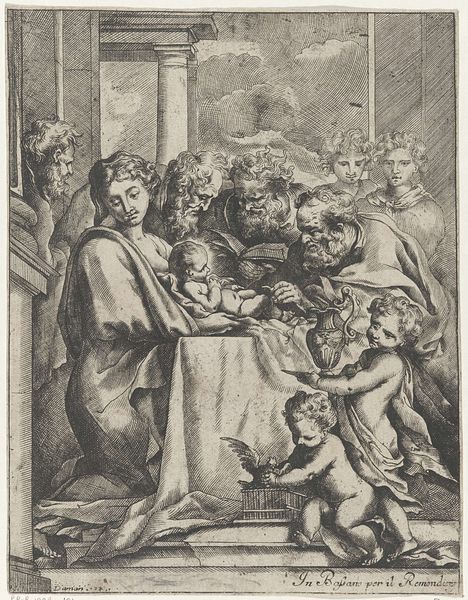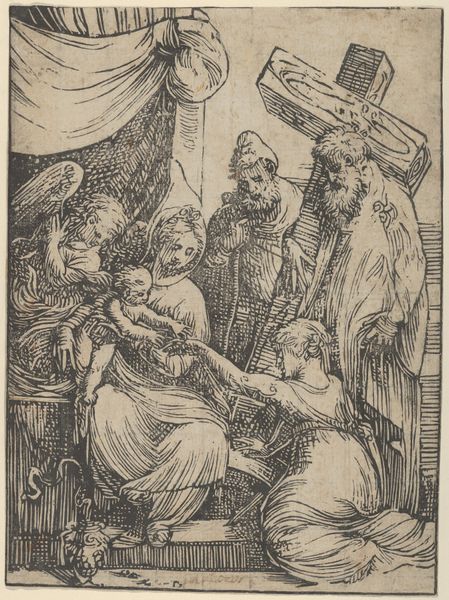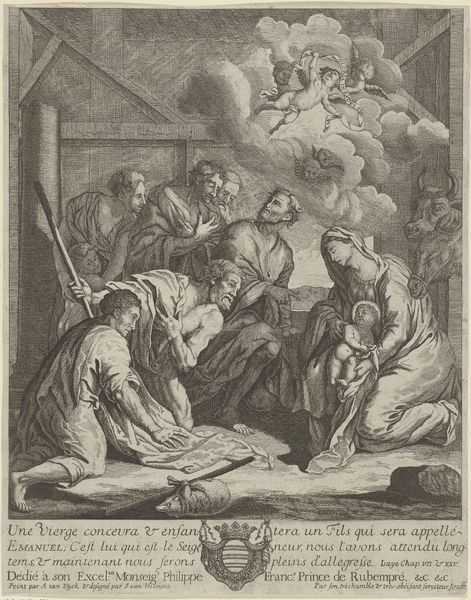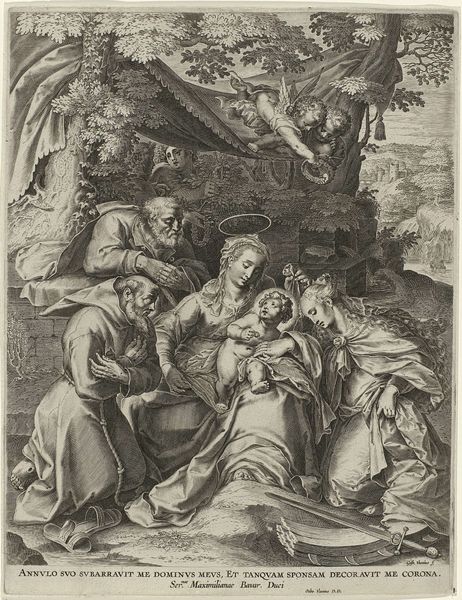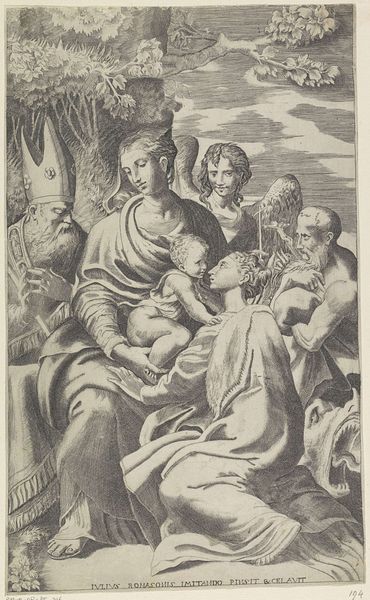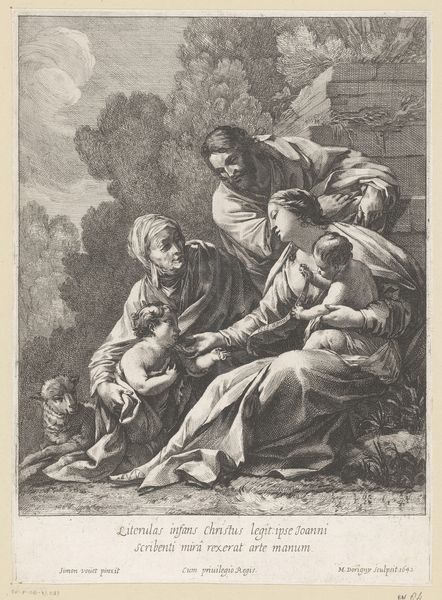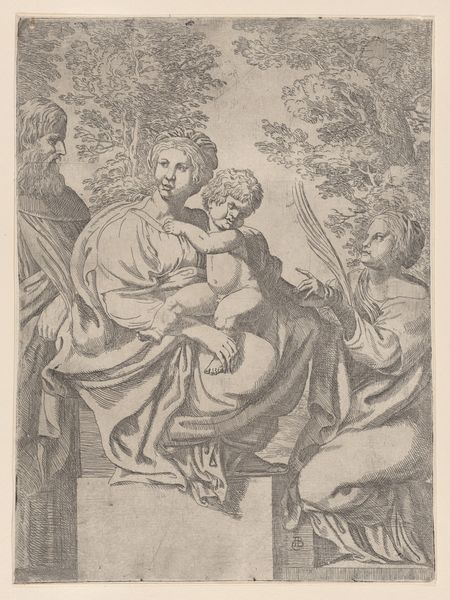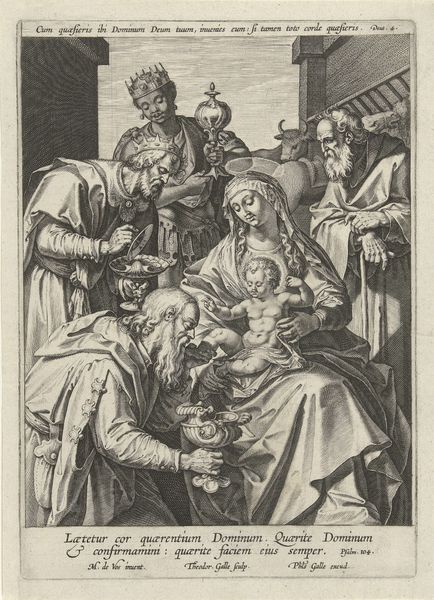
drawing, print, etching, paper
#
drawing
# print
#
etching
#
paper
#
history-painting
Dimensions: 248 × 190 mm (plate/sheet)
Copyright: Public Domain
Editor: Here we have "The Holy Family," an etching on paper from 1568, created by Orazio de Santis. The detailed lines forming the figures really strike me; there’s almost a tangible weight to their robes. What’s your take on this print? Curator: Notice how the etching process itself, the biting of acid into the metal plate, directly informs the aesthetic. This wasn't a spontaneous sketch; it's labor intensive, requiring specialized knowledge and access to materials. Think about the market for prints at this time. Who was consuming these images, and how did that consumption relate to the subject matter of religious devotion? Editor: So, beyond the religious iconography, you are pointing out the importance of how the art was manufactured, who had access to the technology, and ultimately who could afford to purchase this type of print? Curator: Precisely. And consider the paper itself. Its quality, its source, tells us something about the intended audience and the value placed on the image. Was it meant for private contemplation by a wealthy individual or mass distribution? How does the relative accessibility of a print like this challenge traditional ideas about the exclusivity of religious art? Editor: That’s fascinating. I hadn't thought about how the economics of printmaking at that time impacted the art itself. It seems almost obvious now! Curator: The materiality of art is never neutral. Every choice, from the etching needle to the paper stock, reflects a set of social and economic relations. Considering those relations is as critical as understanding the iconography. What new details about the family depicted do you notice when applying that lens? Editor: Well, the detail, almost ornate rendering, seems geared towards displaying wealth within a context of reverence, reminding its viewers of both the everyday and idealized roles that the Holy Family represents. This definitely gives me a new appreciation for prints beyond just the image itself. Curator: Exactly! By focusing on these factors, we’re expanding how art has influenced society by becoming active participants through our own consumption and interpretations.
Comments
No comments
Be the first to comment and join the conversation on the ultimate creative platform.
